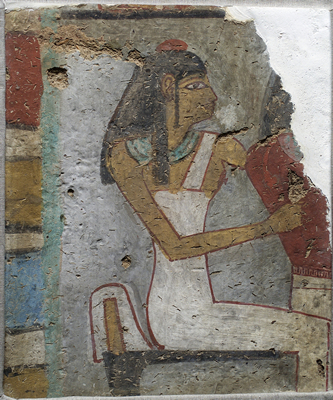
Timespan (3000 BC - AD 300) and purpose (to obtain eternity)
Modern writers usually use 'Ancient Egyptian art' to refer to the canonical 2D and 3D art developed in Egypt from 3000 BC and used until the third century AD. Together with the hieroglyphic script, Egyptian art was designed to obtain for creation an eternal and harmonious existence. Therefore it is not interested in partial views of objects. The perspectival art developed in Europe may seem ‘natural’ to us, because we tend to see the world with the eyes of the camera, principally today the TV and video camera. We can easily forget that perspective is another symbolic system with its own communicative and performative functions, to record and commemorate. Egyptian canonical art had a different function, which has nothing to do with re-presenting reality. Rather, it had to create and project into eternity a version of reality out of which all evil had been meticulously edited.
Aspects and proportions
In order to achieve their careful edition of reality, the Ancient Egyptian artists avoided a single perspective, e.g. a room seen from one corner. Instead, they adopted the most characteristic aspect of each element, building up a composite aspective image: in recent Egyptological writing, the term 'aspective' has been used to refer to this art. Its great triumph lies in the consistency of proportions. Over five hundred years, from around 3100 to 2600 BC, artists developed a harmonious canon of proportions, controlling the angle of view, and the size of each part in relation to the whole.
The human body offers one of the distinctive tests for a visual (re-)presentation of the world, and best demonstrates the deconstructive-reconstructive procedure underlying Egyptian formal art.
Consider this image of a seated woman:
 |
The shoulders are shown full frontal, but the legs and face in profile
In that differential selection of angle of view, the depiction of each part provides the maximum information from different angles: if you showed the shoulders in profile, you would lose one, whereas from the front the face is less recognisably human rather than other animal.
This aspective art implies a conceptual orthogonal frame: invisible rectangles and squares governs stature and deployment. The orthogonal frame finds expression in practice through compositional framing lines, above all the baseline, and through two mechanisms for aligning registers and different scales within a larger composition - (1) horizontal guidelines and (2) a grid of squares.
Copyright © 2002 University College London. All rights reserved.